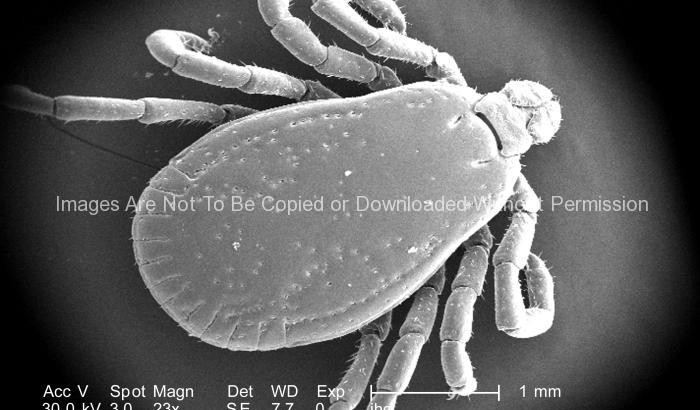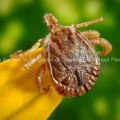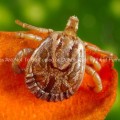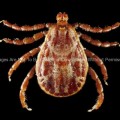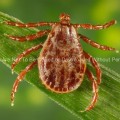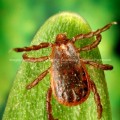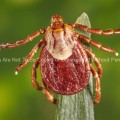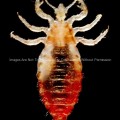Under a low magnification of 23X, this scanning electron micrograph (SEM) depicted a dorsal view of an unidentified male Dermacentor sp. tick found upon a cat in the suburbs of Decatur, Georgia, which measured approximately 3.5mm from its gnathosoma (i.e., capitulum), which is where its mouthparts are located, to the distal abdominal margin. Note that the entire dorsum of this tick’s abdomen is covered by its tough “scutum”, or “shield”, categorizing it as a male, whereas, in female Ixodid-species ticks, the scutum only partially covers the dorsal abdomen. The ridges running along the distal abdominal border are known as “festoons”.
Ticks belong to the Phylum Arthropoda, due to the fact that they maneuver upon jointed ( “Arthro”) legs (“poda”), as well as the Class Arachnida, for they’ve eight of these legs, unlike insects, which use six legs to move about. Ticks act as the vectors for a number of what are termed “Arboviruses”, i.e., Arthropod-borne, including Lyme disease (Borrelia burgdorferi), Rocky Mountain spotted fever (RMSF) (Rickettsia rickettsii), Tularemia (Francisella tularensis), and human granulocytic ehrlichiosis (HGE) (Ehrlichia chaffeensis).
